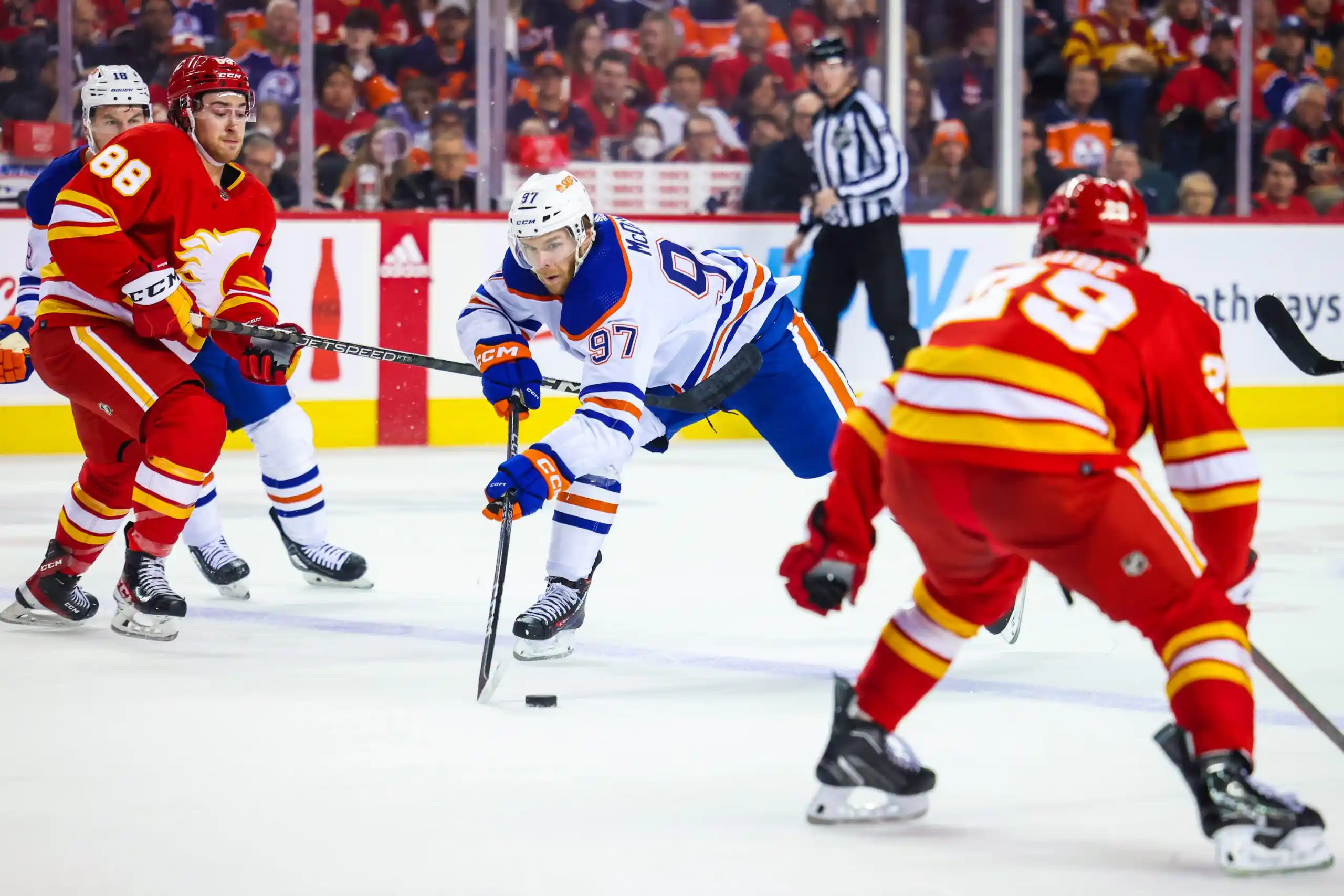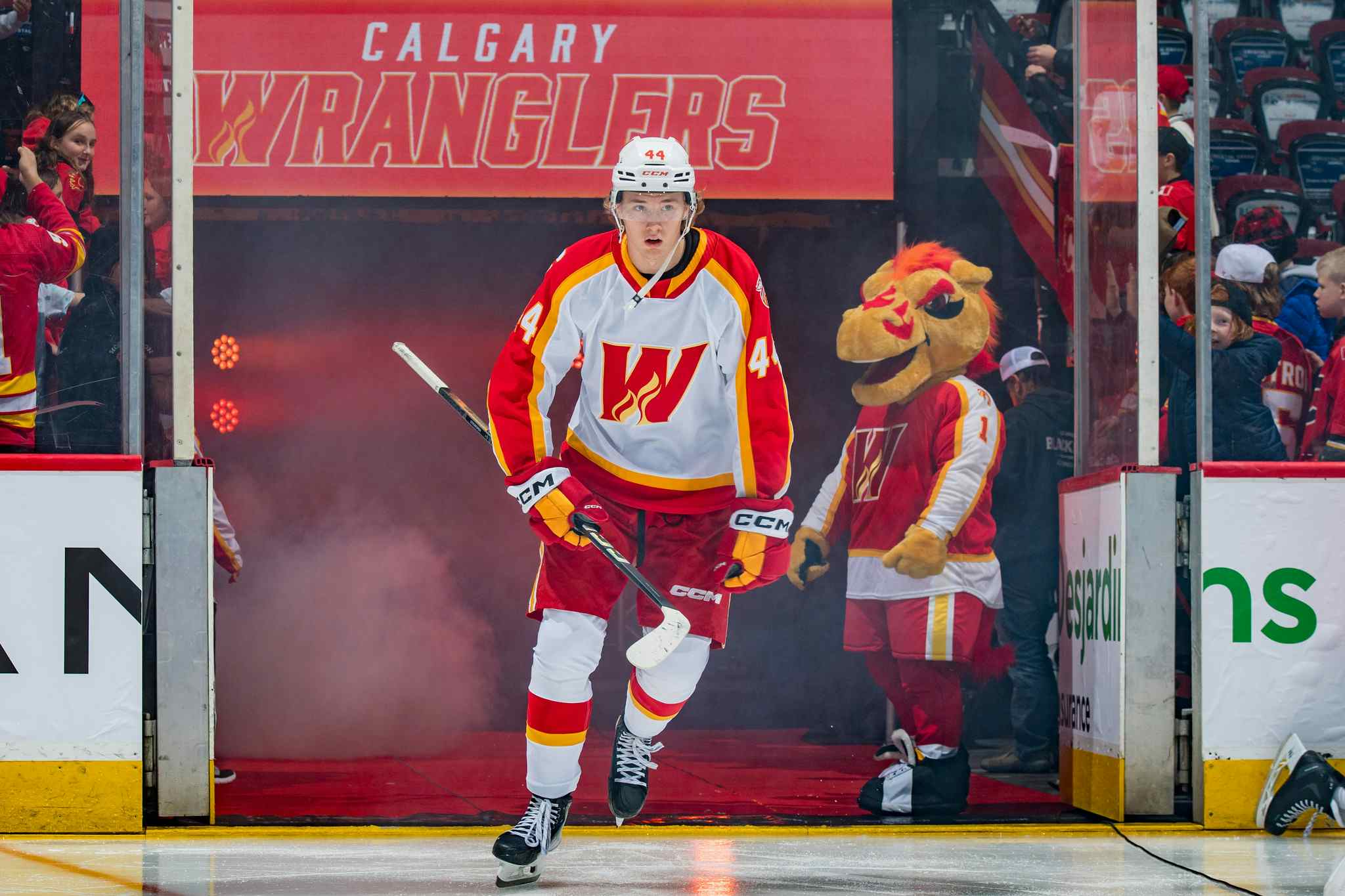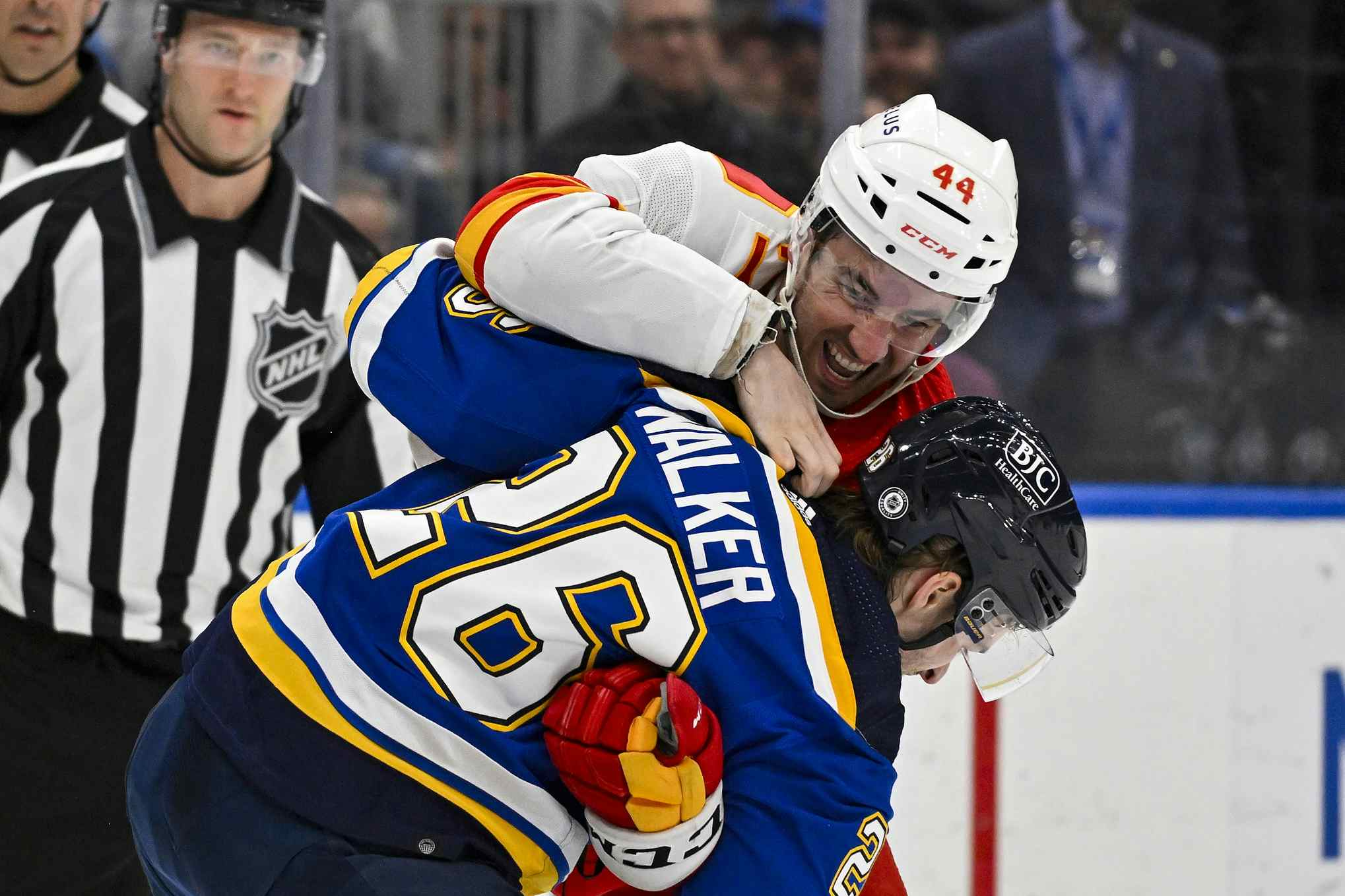2016 NHL Draft: Second tier forwards and their primary points
By Ari Yanover
7 years ago(Hello! You might have see this on Tuesday morning, before all the craziness went down. Now that we’re a few days out from that, let’s go back to a bit of draft talk.)
Barring some good old fashioned Brad Treliving wizardry (which I’m really not willing to count out just yet), the Flames will not be picking in the top three of this year’s NHL draft. Instead, they’ll be picking sixth overall: a place Treliving is reportedly happy with.
Depending on what the Oilers and Canucks do, there’s a chance Treliving won’t have to make a choice at all when it’s his turn to call a name at the podium come June 24, as only one of his second ledge players could be remaining.
No matter what, though: if the Flames have their eyes set on a forward, then they’re pretty much guaranteed to get one of Matthew Tkachuk, Pierre-Luc Dubois, or Alexander Nylander. Assuming those are the three players on Treliving’s second ledge – and this is very much an assumption – let’s compare them.
Before we delve in, I want to stress this is purely a numbers-based post. There’s nothing in here on the forwards’ playing styles or sizes; we’re looking solely at their production over the past season. There are many facets to analyze in selecting a player: this is just one of them.
Who’s leading the team?
When the Flames selected Sean Monahan with their 2013 first round pick, they were choosing a player who had scored 78 points in 58 games: 38 more points than the next best players on the Ottawa 67’s. When they chose Sam Bennett in 2014, they were choosing a kid with 91 points in 57 games: 21 more points than the Kingston Frontenacs’ next most offensive forward.
Monahan and Bennett clearly weren’t riding anyone’s coattails: they were the leaders on their teams. So, how do Tkachuk, Dubois, and Nylander stand up?
| Player | Games Played | Goals | Assists | Points | Place on Team | Team Differential |
| Tkachuk | 57 | 30 | 77 | 107 | Third | -9 from second, +35 on fourth |
| Dubois | 62 | 42 | 57 | 99 | First | +20 on second |
| Nylander | 57 | 28 | 47 | 75 | First | +14 on second |
Tkachuk may have scored the most points of the three, but there’s a red flag there: he was only third in team scoring. True, he was part of a rather elite top three, but he had the worst numbers between him, Mitch Marner, and Christian Dvorak. Dvorak led the London Knights with 121 points in 59 games, while Marner put up 116 in 57.
Tkachuk is likely very good: but is he a leader, or just a really good supporting cast member? And remember, there’s a difference between being a good supporting cast member in juniors and in the NHL.
Dubois and Nylander, meanwhile, were the clearcut leaders on the Cape Breton Screaming Eagles and Mississauga Steelheads. Dubois had the better numbers, but the QMJHL is a bit more scoring-happy than the OHL, so there’s no telling if Nylander would have been able to match him had they been playing in the same league.
Who’s scoring the meaningful points?
The secondary assist is all well and good, but it adds noise. This isn’t true in all cases – sometimes, it can be the secondary assist that’s the most meaningful point in a goal – but more often than not, the actual goal scorer, followed by the guy who created the opportunity with the primary assist, are the ones creating the goals.
Via Prospect Stats, let’s look at how the three compare in regards to even strength primary points: goals, and first assists. We’re taking the powerplay out of the equation here because for a really good team, that can be an easy stat padder, as well.
| Player | ES Points | ES Points per Game | ES Primary Points | ES Primary Points per Game | Place on Team | Team Differential |
| Tkachuk | 63 | 1.105 | 37 | .649 | Fourth | -2 from third, +5 on fifth |
| Dubois | 65 | 1.048 | 53 | .855 | First | +7 on second |
| Nylander | 46 | .807 | 33 | .579 | First | +3 on second |
Another red flag on Tkachuk, as it isn’t just Dvorak and Marner he’s behind on his team, but also Aaron Berisha in raw even strength primary points totals. To be fair, was an overager on the Knights; however, when we’re talking about a top-six pick, you’d expect him to bring more dominance within his own team than to get knocked down another peg.
Tkachuk loses 44 points when we take away his special teams scoring. He only had two shorthanded points all season, so 42 of his 107 points – 39% – were scored on the powerplay. Take away his secondary assist totals, and only 35% of his total points of the year were even strength primary points. He scored more on the powerplay.
League-wide, Tkachuk was 22nd in the OHL in terms of even strength primary points per game. He was third on the Knights per game (ahed of Berisha here), behind Marner (sixth overall) and Dvorak (seventh).
(If you wanna feel good for a moment, Andrew Mangiapane was second in the OHL at .949; his teammate, Kevin Labanc, led the league with 1.092.)
Dubois, meanwhile, lost 34 of his points to special teams. Seven of his points were shorthanded, so that’s 27 powerplay points: 27% of his season totals. Take away his even strength secondary assists, though, and he still had 53 primary even strength points: 54% of his season totals.
Dubois was fourth in the QMJHL in terms of even strength primary points per game. All three players above him are older than him.
Finally, we come to Nylander, who loses 29 of his points to special teams. He only had one shorthanded point all season, so that’s 28 powerplay points: 37% of his season. His primary even strength points made up 44% of his points on the season.
When it comes to primary even strength points per game throughout the OHL, Nylander was 30th overall.
Who do you hope for?
Based on nothing more than the points these three forwards scored and the circumstances in which they obtained them, I’m left crossing my fingers that Dubois somehow falls to sixth overall. He and Nylander both led their teams, but Dubois was right at the very top of his league.
And while I have no doubt that Tkachuk is going to make a team very happy, I’m not going to be upset if he goes before the Flames have a chance to pick him. He may not have yet gotten the chance to truly lead a team of his own, but that’s still something he’s responsible for. That and, compared to Dubois and Nylander, his impressive points totals are much more filled with noise than theirs.
Recent articles from Ari Yanover





